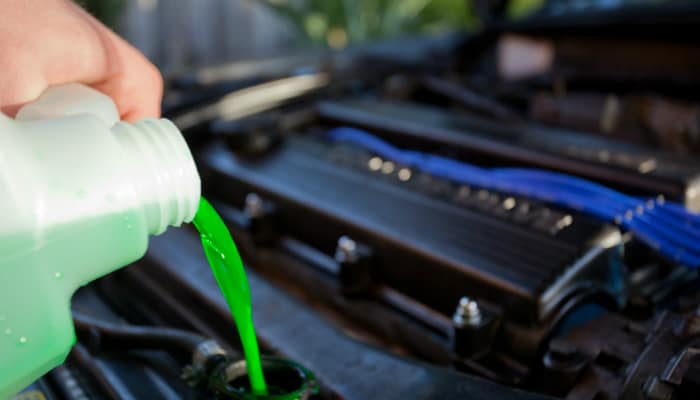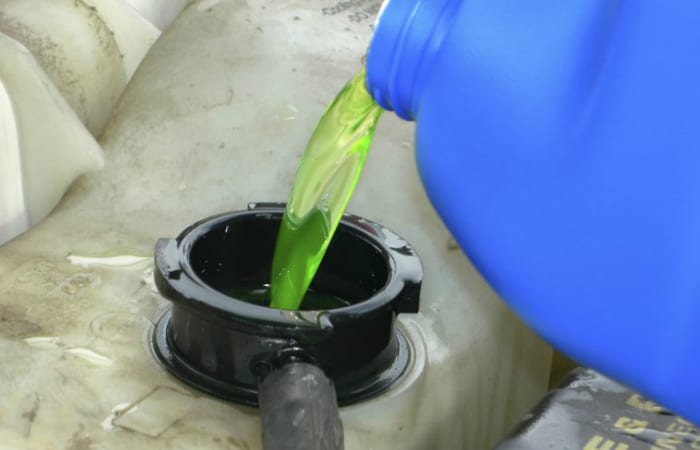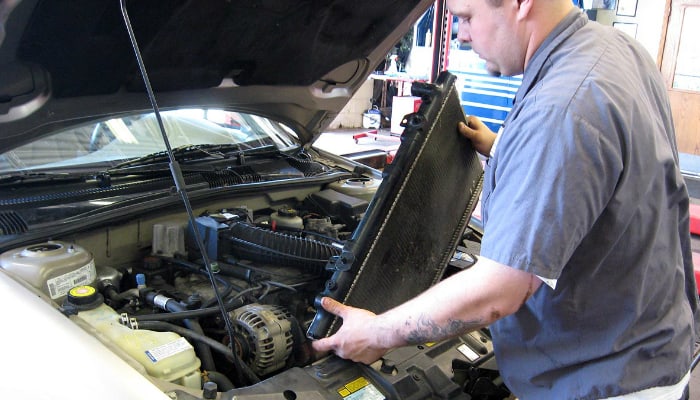Coolant is extremely important for regulating high temperatures. It is an essential fluid for all types of vehicles. Since most of us always drive to certain destinations daily, we expose our engine everyday to the hazards of intense heat coming from continuous internal combustion. So, let’s find out how often we should replace coolant to ensure longevity of our engines.
Important Terms You Should Know
Since we are talking about coolant maintenance, we should understand some relevant terms first:
Radiator
Coolant directly works with the radiator to regulate the engine’s temperature. So, it is only appropriate to understand this essential component even more. Fortunately, the radiator’s function is easy enough to understand. Radiators have a complex system that quickly cools down a hot coolant before the fluid returns to the engine to get more heat. As a radiator removes heat from the hot coolant – when we look at the big picture – it actually expels heat all the way from the engine. That is why it is widely considered to be the star of any cooling system.

Antifreeze
It is amusing how two different things are considered to be exactly the same by most people. Coolant is only half antifreeze; the rest is water. The standard 50:50 ratio of coolant is best for high and moderate temperatures. To start a car during winter, the essence of coolant is lost for you need to use more antifreeze.
Water and antifreeze function perfectly together because each of them compensates for what the other lacks. Antifreeze is useful for extreme temperatures since it has a higher boiling point and, at the same time, lower freezing point than water. However, it is not really effective at isolating heat from the engine. Water works better when it comes to that. The downside though is how water causes corrosion. See, one cannot live without the other to maintain the cooling system. That is why coolant exists.
Radiator Fluid
Now, this is the correct synonym of coolant. There is no difference at all unlike the case between the coolant and antifreeze. We already explained earlier that the main function of radiators is to stop the engine from overheating. That can only be possible with coolant which carries the heat. So, coolant is technically the radiator fluid.
Radiator Flush
This is actually the technical term for replacing coolant. It aims to keep metal parts safe from corrosion due to old antifreeze.
Cooling System
The radiator is just a part of the vehicle’s cooling system. It works with other components namely the pump, thermostat, and special passageways to and from the engine.
To easily understand how the cooling system works, we will only focus on the main function of each component. First, the pump pushes coolant into the engine. Next, the thermostat waits until the coolant heats up. As soon as the coolant gets enough heat from the engine, the thermostat allows it to proceed to the radiator.
When the coolant reaches the radiator, it passes several tubes just to reach the radiator’s fins. Oftentimes, a special fan helps the radiator to transfer heat from the coolant into the air surrounding the radiator. To finish a cycle, the thermostat makes sure that the coolant is cool enough once again so the fluid can return to the engine.
How Often to Change Coolant
If we base the answer to what car manufacturers are saying, the range is too wide because of product claims. It goes from 60,000 miles up to 150,000 miles.

However, it doesn’t hurt to inspect the cooling system for signs of corrosion every 50,000 miles. That may happen even if your vehicle’s coolant is still functional. There are test strips available that can check whether the cooling system’s fluid starts to get acidic. Additionally, a hydrometer is also helpful since it can measure the system’s boiling and freezing point.
If you notice rust in the cooling system, you should change the coolant. Your vehicle must undergo radiator flush to eliminate impurities.
How to Change Coolant
Here is a brief guide on how to do a radiator flush:
Preparation
First off, check your owner’s manual for the coolant type and amount needed for your vehicle. Then, make sure your car is parked on a flat surface if you still need to use a floor jack.
You will need a bucket beneath the car, under the radiator, to catch the old coolant flushing out. So, if your car is too low for a bucket underneath, you really need to jack it up.
Lastly, disconnect the car battery just to be safe. Remember that you should start your coolant maintenance only if the car has already cooled down.
Draining the Radiator
To start with, find your radiator’s drain valve. If you are unsure about the location of your radiator, it is usually before the engine bay, at the back of the car’s grill. You are more likely to see a fan on the radiator. Then, you should see metal or plastic tanks beside the aluminum component. Expect to see a drain valve on the driver’s side, specifically on one of the tanks. However, it is best to read your owner’s manual first since some vehicles have a different placement of the drain valve.
Make sure that your bucket can contain all of the radiator fluid. Then, position it beneath the car as expected, specifically under the drain valve. Finally, open the valve to drain the coolant. Afterwards, close the valve to secure the new coolant you will add later.
Do not just dispose the radiator fluid anywhere. You really have to know proper disposal of hazardous automobile fluids.
Emptying the Radiator
To ensure that the radiator is totally free from the old coolant, you should fill it with a jug full of water for the next step. Tightly close the radiator cap before entering your car to start the engine. Turn up the heat inside the cabin for 10 minutes or until the temperature gauge reaches the red section. Shut your car off immediately when your engine starts to overheat.
Before draining the remaining radiator fluid, let your car cool down first. You should be able to touch the radiator without burning your fingers before you can proceed. You might wait more than an hour for this.
Replacing Coolant
Finally, you may now pour the new coolant into the radiator. Do it slowly to prevent overflowing. Make sure the radiator is properly filled up. Then, turn the heat up one more time for 10 minutes just like before. The gauge should stay at the normal level even until 10 minutes is up.
Summary
Replacing coolant from time to time is almost non-existent for some vehicles because of their extremely high mileage interval standards. However, feel free to inspect your cooling system every 50,000 miles. If there is corrosion, you should start considering the need for a radiator flush.









